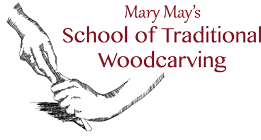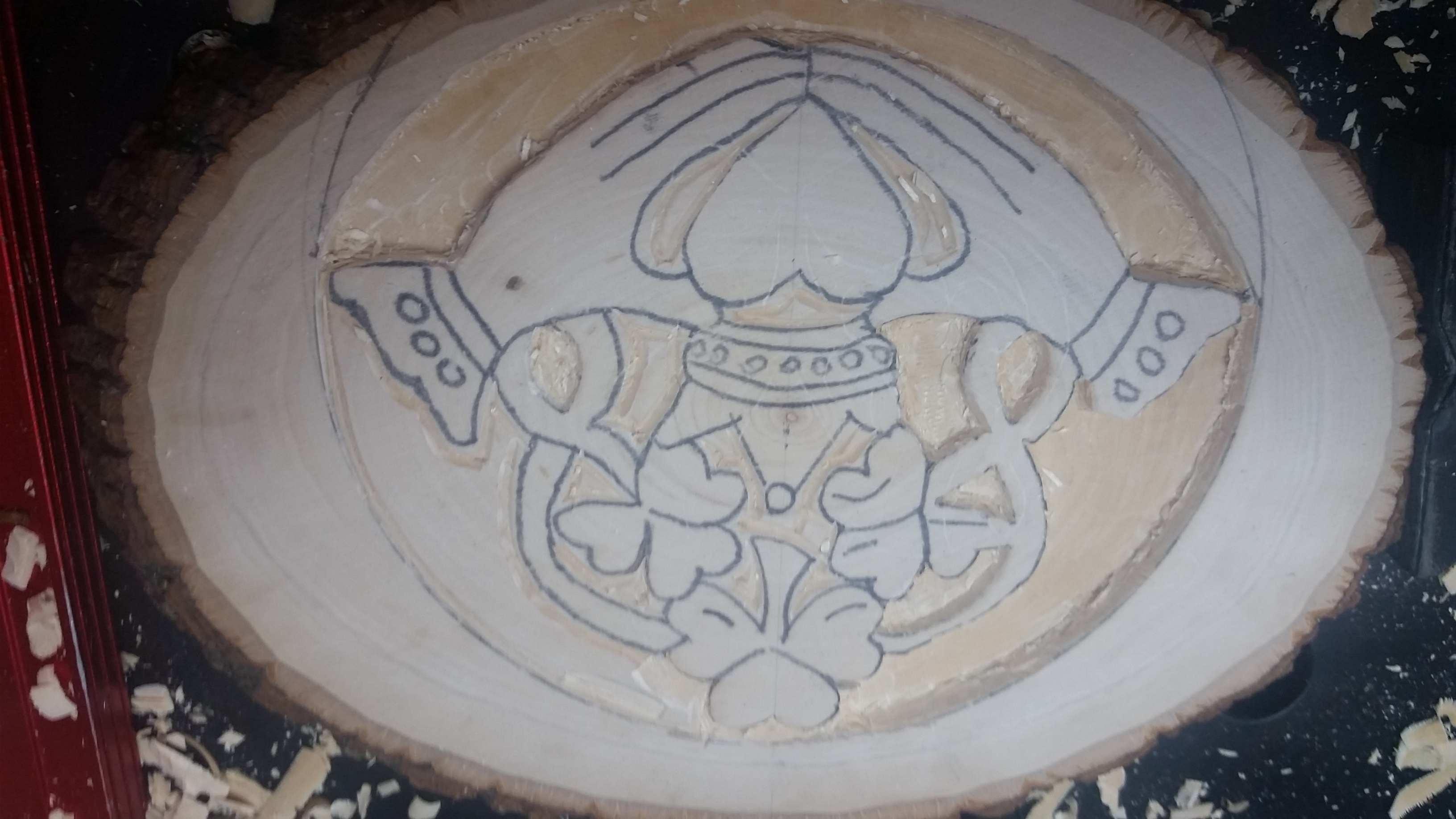Tools for tight spaces in relief carving
Quote from Rob Christine on November 16, 2017, 4:42 pmI am new to carving. I am attempting to carve the piece in the attached photo. I am having trouble getting into the small areas around the center. I've gone further than what is in this picture. I've cleaned up most of it, but many of the small spaces have jagged bottoms, as I can't get in there to flatten them out. I am using mostly fishtail gouges. What sort of tool should I buy to do this kind of work? I'm thinking that I need spoon gouges or skewed spoon gouges, but I'm not sure if there is something else out there that would be more suitable. Can anyone offer some advice?
Thanks,
Rob
I am new to carving. I am attempting to carve the piece in the attached photo. I am having trouble getting into the small areas around the center. I've gone further than what is in this picture. I've cleaned up most of it, but many of the small spaces have jagged bottoms, as I can't get in there to flatten them out. I am using mostly fishtail gouges. What sort of tool should I buy to do this kind of work? I'm thinking that I need spoon gouges or skewed spoon gouges, but I'm not sure if there is something else out there that would be more suitable. Can anyone offer some advice?
Thanks,
Rob
Uploaded files:
Quote from Matthew Mizner on November 16, 2017, 9:59 pmRob,
”Grounding” is probably the least favorite part of carving for me, but when you get it right, it makes a huge difference in a great looking carving!
There are a couple ways you can go about this. I own a couple spoon bent gouges that work great for grounding. I prefer a number 2 as it is close to flat without digging in from the edges of the tool. And a v-tool works great for cleaning up the fuzzies along angled walls.
If you don’t want to buy tools, you can always texture the low areas with a carving punch. These can be made yourself, and add a textured appearance to the background, which in turn hides some of those hard to get areas.
Let us see how your progress goes as you work more on your carving.
Rob,
”Grounding” is probably the least favorite part of carving for me, but when you get it right, it makes a huge difference in a great looking carving!
There are a couple ways you can go about this. I own a couple spoon bent gouges that work great for grounding. I prefer a number 2 as it is close to flat without digging in from the edges of the tool. And a v-tool works great for cleaning up the fuzzies along angled walls.
If you don’t want to buy tools, you can always texture the low areas with a carving punch. These can be made yourself, and add a textured appearance to the background, which in turn hides some of those hard to get areas.
Let us see how your progress goes as you work more on your carving.
Quote from Tim Rauch on November 17, 2017, 8:06 pmI have a couple of spoonbent #3 gouges I use for this. One is 3mm and the other is 6mm. Often if you just leave the tight areas you will find them easier to access once more material has been removed around them. This is a little nerve racking at first because you end up carving away your design but redawing as you progress just becomes part of the process.
I have a couple of spoonbent #3 gouges I use for this. One is 3mm and the other is 6mm. Often if you just leave the tight areas you will find them easier to access once more material has been removed around them. This is a little nerve racking at first because you end up carving away your design but redawing as you progress just becomes part of the process.
Quote from MaryMay on November 17, 2017, 10:39 pmGreat answers Matthew and Tim. I would agree with everything that was said. Small spoon bent, either #2 or #3 curvature. Sometimes these spoon bent have a much more aggressive bend, and these are the ones you want. If you want to see how to make the texturing tool, I show how to make them in the Antique Finishing on the Celtic Cross lesson here: https://www.marymaycarving.com/carvingschool/2016/03/16/antique-finishing-on-the-celtic-cross-introduction/
Would love to see the finished carving.
Great answers Matthew and Tim. I would agree with everything that was said. Small spoon bent, either #2 or #3 curvature. Sometimes these spoon bent have a much more aggressive bend, and these are the ones you want. If you want to see how to make the texturing tool, I show how to make them in the Antique Finishing on the Celtic Cross lesson here: https://www.marymaycarving.com/carvingschool/2016/03/16/antique-finishing-on-the-celtic-cross-introduction/
Would love to see the finished carving.
Quote from Deleted user on December 30, 2017, 2:24 pmHello All, my first post!
For Grounding or Fielding, a router plane is used in woodworking. In the case of your carving, Lee Valley Tools (Veritas) makes a miniature router plane with a 1/8" wide blade. Expensive when it looks like a kids toy but actually made to work. For larger jobs, a full size router plane and the good ones allow you to add a base to span larger areas. I've provided a link to the Canadian Store.
Link: http://www.leevalley.com/en/Wood/page.aspx?p=67814&cat=1,41182
Iain
Hello All, my first post!
For Grounding or Fielding, a router plane is used in woodworking. In the case of your carving, Lee Valley Tools (Veritas) makes a miniature router plane with a 1/8" wide blade. Expensive when it looks like a kids toy but actually made to work. For larger jobs, a full size router plane and the good ones allow you to add a base to span larger areas. I've provided a link to the Canadian Store.
Link: http://www.leevalley.com/en/Wood/page.aspx?p=67814&cat=1,41182
Iain
Quote from MaryMay on January 1, 2018, 10:50 pmHello Iain,
Welcome! Thanks for that information. I haven't used a router plane, but need to try this in the future.
Hello Iain,
Welcome! Thanks for that information. I haven't used a router plane, but need to try this in the future.
Quote from Tim Rauch on January 4, 2018, 12:42 pmI would be interested in hearing from someone who has used a router plane on a carving. I recently bought an old Stanley 71 router plane and it is definitely my latest favorite woodworking tool. I used it to true up a bunch of tenons I cut for a project I'm working on and I was very impressed with the precision I achieved and it's also a lot of fun to use. It can only take very shallow (depending on the wood not more than 1/32") shavings at a time so for grounding out a carving would be a long process. You would have to lower the background with gouges or in some other way first and only use the router for the final leveling. The blade is flat like a #1 gouge and so the corners dig in. I'm looking forward to trying it next time I get time to carve. I'd check for one on Ebay or elsewhere before I'd pay Lee Valley prices. I got mine for $15.
I would be interested in hearing from someone who has used a router plane on a carving. I recently bought an old Stanley 71 router plane and it is definitely my latest favorite woodworking tool. I used it to true up a bunch of tenons I cut for a project I'm working on and I was very impressed with the precision I achieved and it's also a lot of fun to use. It can only take very shallow (depending on the wood not more than 1/32") shavings at a time so for grounding out a carving would be a long process. You would have to lower the background with gouges or in some other way first and only use the router for the final leveling. The blade is flat like a #1 gouge and so the corners dig in. I'm looking forward to trying it next time I get time to carve. I'd check for one on Ebay or elsewhere before I'd pay Lee Valley prices. I got mine for $15.
Quote from Matthew Mizner on January 4, 2018, 8:24 pmTim, I’ve never used one to level grounding on a carving before...tho I love using mine for making furniture. Tenons, hinge mortises, you name it and I’ll break that thing out. It’s definitely a time saver and makes for some precise hand tooling...something I need any help I can get with!
I'm sure I could google it, but is the Stanley 71 a large or small plane? My plane is large, and I’d probably need to snag a smaller one for use on a carving panel.
Edit: I bet a router plane would work great with what Rob is working on at the beginning of this post.
Tim, I’ve never used one to level grounding on a carving before...tho I love using mine for making furniture. Tenons, hinge mortises, you name it and I’ll break that thing out. It’s definitely a time saver and makes for some precise hand tooling...something I need any help I can get with!
I'm sure I could google it, but is the Stanley 71 a large or small plane? My plane is large, and I’d probably need to snag a smaller one for use on a carving panel.
Edit: I bet a router plane would work great with what Rob is working on at the beginning of this post.
Quote from Tim Rauch on January 4, 2018, 10:24 pmThe Stanley 71 is a large router plane. The Stanley 271 is a small plane.
The Stanley 71 is a large router plane. The Stanley 271 is a small plane.

